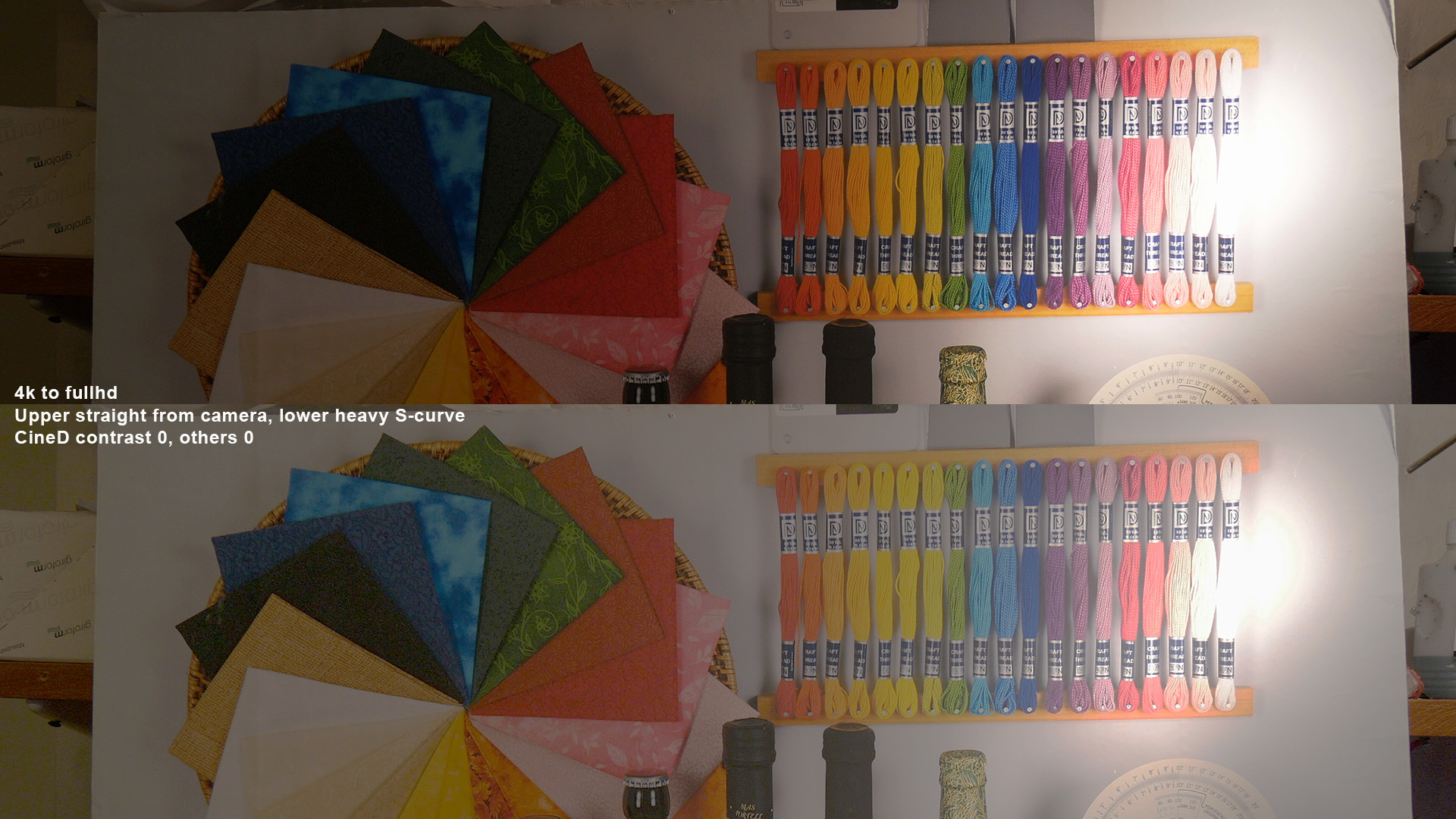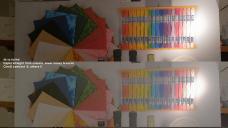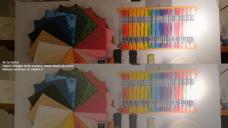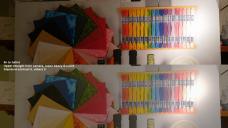
-
@alexanderkooistra Not sure what you mean by "small +in the highlights en - in the highs"?
I have been using the natural profile on all 0's, seems to be the best colour rendtion. Sharpness and contrast need to be turned down on lumix lenses but on my voigtlander keeping these at 0 seem fine.
-
@Imackreath Sounds like your original shots are way to saturated/coloured/hard to do any serious grading if only rec709 luts do anything pleasing. If you need real grading (not talking about colour correction, the first step one should take) I also find it tough to get clean flat stuff out of the GH4. Neutral with everything toned down en a small +in the highlights en - in the highs might work.
-
Not having much joy with grading with the GH4 yet. Trying to use any of the filmconvert stuff seems to bring out contrasty images not please to the eye with strange colour tones. The most success has been from using the rec709 luts in the impulz pack. These luts only produce small colour changes but are pleasing to the eye none the less.
-
Got my GH4 last week and did some tests using Natural all 0's except for -3 on NR. Looks great, oranges\reds come out a bit too vivid though. Also a bit too contrasty with the lumix lenses, not so much with the voigtlander however.
Noticed if I bring up the blacks in the post in shows a lot of noise...might have to change contrast in camera rather than in post to get round the issue..
-
I still use the neutral setting with -5 -5 -5 -2 0. Gives a pretty clean (no orange skin) image. This clip has a lot of red elements in it, pretty close to what I would see in real life (set the wb a bit warmer):
Yeah I know, the bitrate @ 96fps is low and the shots are less crisp as shooting 50fps and slowmo them.... No one at the running club really cares and for clips like this nether do I. Fast to edit, fine for this purpose.
-
Hello community! So we had the opportunity to work with the Panasonic GH4 and GH3 together in an attempt to match them as best as possible. Take a look!
-
And you have had no issues with colour rendition in cine v?
-
@RRRoger Hi, not the Vivid setting. Cinelike V. If you shoot in Cine V, you'll have to do very little grading. It looks good as is. Check out Noam's blog comparing Cine D + grading and Cine V. http://noamkroll.com/download-my-free-gh4-cine-d-lut-here-plus-why-im-not-using-the-new-gh4-supertone-settings/
-
Trawling through this thread and others it seems that some have issues with colour renditions of cine d and v, especially with oranges, and I have seen a pattern recently with many people suggesting 'Natural' as their go to setting of choice, obviously with different settings for sat/con/sharp/ etc.
I am picking up a GH4 tomorrow, I currently have the 14-140 mk2 and a voigtlander 25mm f0.95. I think to start my settings will be Natural with -1 contrast, 0 saturation, -2 sharpness and -3 NR.
If other fans of natural could post there experiences, settings and video results it would be much appreciated. Ideally what I am looking for is a look that out of the camera you could pretty much use without any grading, but also still versatile enough to take a little grading if needed.
-
I think it should underexpose the same way, all done at sensor level - sensor doesn't know a thing about ISO, it just exposes as told.
CineD also overexposes to get more shadow detail - with same f, shutter and ISO, meter shows a 1/3Ev underexpose in this mode, telling us to "Please, expose a little more..."
Let's get real - the sensor is the same, it cannot get more or less in Standard, Natural, CineD - the processing is the one that changes and the modes that show less shadow noise is because shadows are darker, hence, with less visible noise (but also less visible detail). Modes that crunch blacks are cleaner, I wonder why... :)
-
Many think that iDynamic is not good. It increases noise and makes image worse.
It works so that it underexposes 1/3 ev to get more highlights and lightens shadows and midtones. When using auto exposure it selects 1/3 ev darker value. With higher iso the bad things may happen due to underexposure when camera still shows normal exposure. I was surprised when I had iDynamic on with RAW photos! and the camera underexposed 1/3 ev and I got darker photos with normal RAW developement.
Interesting question is what it is doing when using fully manual exposure. How can it underexpose when S, A and iso are fixed. Does it use iso 160 when set to iso 200?
I use iDynamic low outdoors with iso200 and there is very little noise. I dont use it indoors with higher iso.
-
My team and I use Cine-Like D because it has a proven 10.9 stops of latitude from shadows to highlights. This cannot be said for other profile settings which typically take a hit of 1 stop.
I made a quick test. All 4 videos with same exposure and with tripod and the same lightning. Iso 200, NR -5, 4k down sampled to fullhd, no iDynamic or curves or other than profile and contrast settings. 0-255 levels and captures of full levels and uncompressed frames to Photoshop.
I adjusted images heavily in Photoshop (S-curve, darkening HL and brightening shadows)
What my eye sees is that there is very little difference in dynamic range between CineD and Natural. In fact Natural -5 contrast has more dyn range than CineD 0. Natural is easier to adjust "normal looking". CineD has issues with red colors, they are too yellowish.
That "supertone" setting uses high contrast value and it has less dyn range. Dyn range is generally defined by contrast value with all the profiles.


 cined-0.jpg1920 x 1080 - 560K
cined-0.jpg1920 x 1080 - 560K
 cined-5.jpg1920 x 1080 - 535K
cined-5.jpg1920 x 1080 - 535K
 natural-5.jpg1920 x 1080 - 562K
natural-5.jpg1920 x 1080 - 562K
 stand--0.jpg1920 x 1080 - 634K
stand--0.jpg1920 x 1080 - 634K -
My team and I use Cine-Like D because it has a proven 10.9 stops of latitude from shadows to highlights. This cannot be said for other profile settings which typically take a hit of 1 stop. When you introduce in camera curves (or master pedestal) your shadows will undoubtedly introduce a level of noise. We have watched multiple samples from other professionals alike and found this to work nicely for us. It should be stated, color is a subjective experiences, and what might work for one individual, might not work for the next. We have found however the grading experience with our settings to be pleasurable and never found much degradation or "noise" in our image. What little noise there might be to the critical eye in my professional opinion is passable for a filmic look.
We very much look forward to V-Log coming soon for a confirmed whopping 13 stops of latitude! I am also interested to play with Michael Medgyesi's settings ( http://www.supertone.dk/#!GH4-Optimal-Film-Setting-works-in-stills-too/c24o4/8E18836A-F271-4A14-AF0D-C575B9D5F4B6 ) and see how that lends itself to other works. In closing, your in camera "look" accredits itself to your own image or style. If you can produce the image you are personally seeking, no profile setting is the wrong choice! I hope this helps clarify and please take a look at "image & Color" utilizing Cine-like D. Many happy shootings to you!
-
@alexanderkooistra Interesting, I will try that, I am very happy with Natiral and Portrait, but I will try Cine-D with no adjustments and see how that goes.
-
I like to use neutral with some tweaks for all the stuff I'll edit or use on my own. If I have to hand it to someone else (client that's for instance used to broadcast material) I do use Cine-D. But without and adjustments. I find it to be color accurate. Tested with charts and several light sources. Whenever you shift the saturation and contrast the reds get f%ked-up in Cine-D, really bad.
-
You said...... Seems that someone are still using cineD although it has color accuracy issues compared to Standard or Natural. What are the real benefits? Normal profiles are quite flat with contrast -5 and even flatter with iDynamic in very high contrast sunny scenes but has better colors and less noise........
Yep I pretty much 100% agree with this, my noise problems with the Gh4 are minimal. I also underexpose a little using the Standard etc...profiles.
I use Cine-D a little...not that much, I mainly use Standard, Natural or Portrait, and yes...many say never touch iDynamic...well I find its awesome in high contrast bright scenes, just lifts the bottom end nicely and balances the image with no real extra noise. I would not use it real low light tho, it does add noise then, but for a lot of other shots, it makes a real difference..balances the contrast nicely. A lot of advice about the GH4 that has come from many so called pros does not gel with my personal experience, too many people go to Cine-D -5 -5 -5 -5 blah blah blah and wonder why the post work is a pain in the rear.
Howdy, Stranger!
It looks like you're new here. If you want to get involved, click one of these buttons!
Categories
- Topics List23,987
- Blog5,725
- General and News1,353
- Hacks and Patches1,152
- ↳ Top Settings33
- ↳ Beginners255
- ↳ Archives402
- ↳ Hacks News and Development56
- Cameras2,364
- ↳ Panasonic993
- ↳ Canon118
- ↳ Sony156
- ↳ Nikon96
- ↳ Pentax and Samsung70
- ↳ Olympus and Fujifilm100
- ↳ Compacts and Camcorders300
- ↳ Smartphones for video97
- ↳ Pro Video Cameras191
- ↳ BlackMagic and other raw cameras116
- Skill1,960
- ↳ Business and distribution66
- ↳ Preparation, scripts and legal38
- ↳ Art149
- ↳ Import, Convert, Exporting291
- ↳ Editors191
- ↳ Effects and stunts115
- ↳ Color grading197
- ↳ Sound and Music280
- ↳ Lighting96
- ↳ Software and storage tips266
- Gear5,420
- ↳ Filters, Adapters, Matte boxes344
- ↳ Lenses1,582
- ↳ Follow focus and gears93
- ↳ Sound499
- ↳ Lighting gear314
- ↳ Camera movement230
- ↳ Gimbals and copters302
- ↳ Rigs and related stuff273
- ↳ Power solutions83
- ↳ Monitors and viewfinders340
- ↳ Tripods and fluid heads139
- ↳ Storage286
- ↳ Computers and studio gear560
- ↳ VR and 3D248
- Showcase1,859
- Marketplace2,834
- Offtopic1,320





